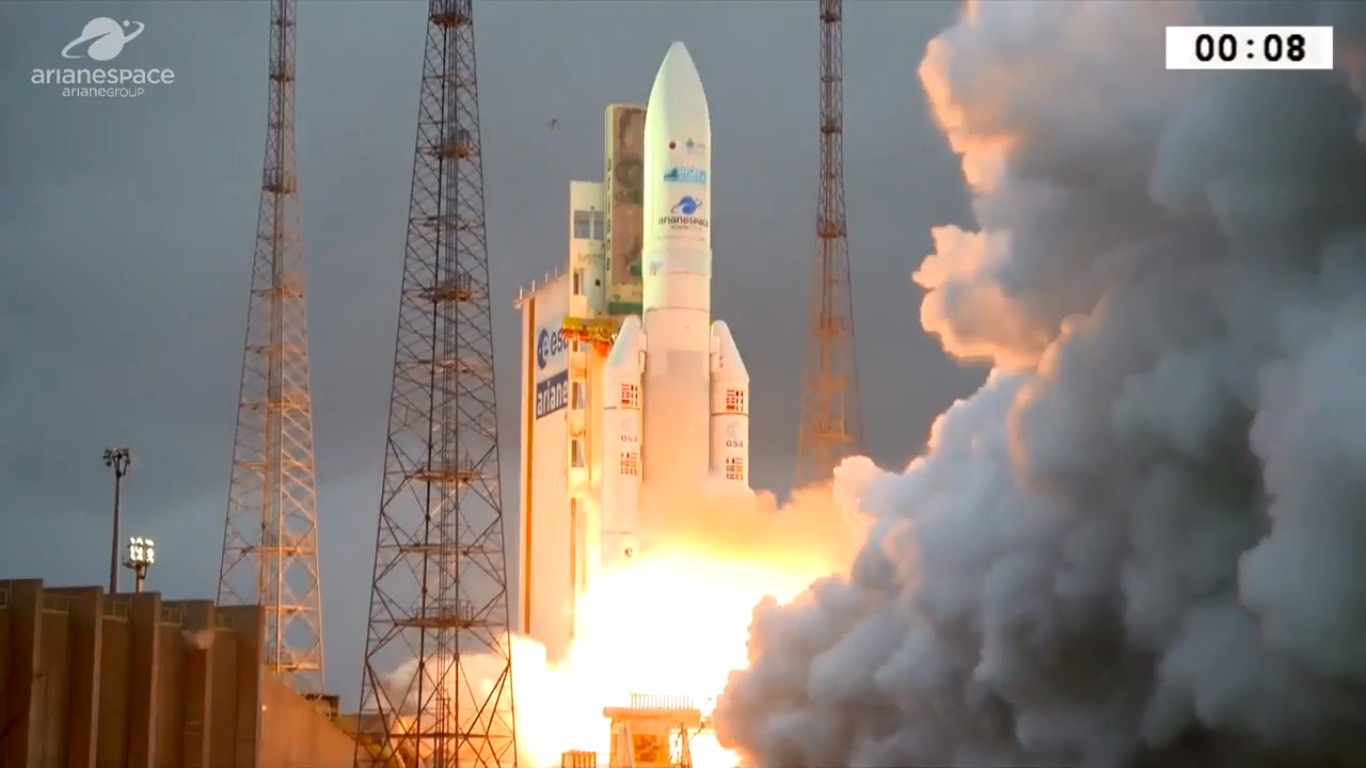European Rocket Lofts Communications Satellites in 1st Launch Since Glitch
A European rocket bounced back from a minor January anomaly with a picture-perfect launch of two commercial communications satellites today (April 5).
An Ariane 5 rocket lifted off from the Guiana Space Center in French Guiana today at 5:34 p.m. EDT (2134 GMT), successfully delivering the DSN-1/Superbird-8 and HYLAS 4 satellites to geostationary transfer orbit high above Earth.
The targeted transfer orbit brings the satellites as close as 155 miles (250 kilometers) to Earth and takes them as far away as 22,236 miles (35,786 km), according to representatives of Arianespace, the France-based company that operates and markets the Ariane 5. The two satellites will use their own onboard thrusters to settle into their final operational orbits.
Today's flight was the first for an Ariane 5 since Jan. 25, when one of the workhorse rockets carried two communications satellites to the wrong orbit because its onboard computer had been programmed with faulty navigation data. The mistake wasn't fatal for the affected satellites; they'll be able to get to their final orbits but will have to use more fuel than originally expected to do so, the spacecraft's operators have said.
DSN-1/Superbird-8 and HYLAS 4 will be operated by Japanese company Sky Perfect JSAT and Britain-based Avanti Communications, respectively. Each satellite has a design life of 15 years.
"Superbird-8 will carry high-performance Ku and Ka transponders and will provide satellite communications services mainly in the Japanese market," Arianespace representatives wrote in a mission press kit.
"HYLAS 4 will deliver high-speed, reliable and secure satellite communications to internet service providers (ISPs), mobile network operators (MNOs), governments and satellite operators across Europe, through its Ka-band capacity," the representatives added.
Breaking space news, the latest updates on rocket launches, skywatching events and more!
Today's launch was the 242nd overall liftoff for an Ariane rocket, Arianespace representatives said.
Follow Mike Wall on Twitter @michaeldwall and Google+. Follow us @Spacedotcom, Facebook or Google+. Originally published on Space.com.

Michael Wall is a Senior Space Writer with Space.com and joined the team in 2010. He primarily covers exoplanets, spaceflight and military space, but has been known to dabble in the space art beat. His book about the search for alien life, "Out There," was published on Nov. 13, 2018. Before becoming a science writer, Michael worked as a herpetologist and wildlife biologist. He has a Ph.D. in evolutionary biology from the University of Sydney, Australia, a bachelor's degree from the University of Arizona, and a graduate certificate in science writing from the University of California, Santa Cruz. To find out what his latest project is, you can follow Michael on Twitter.

